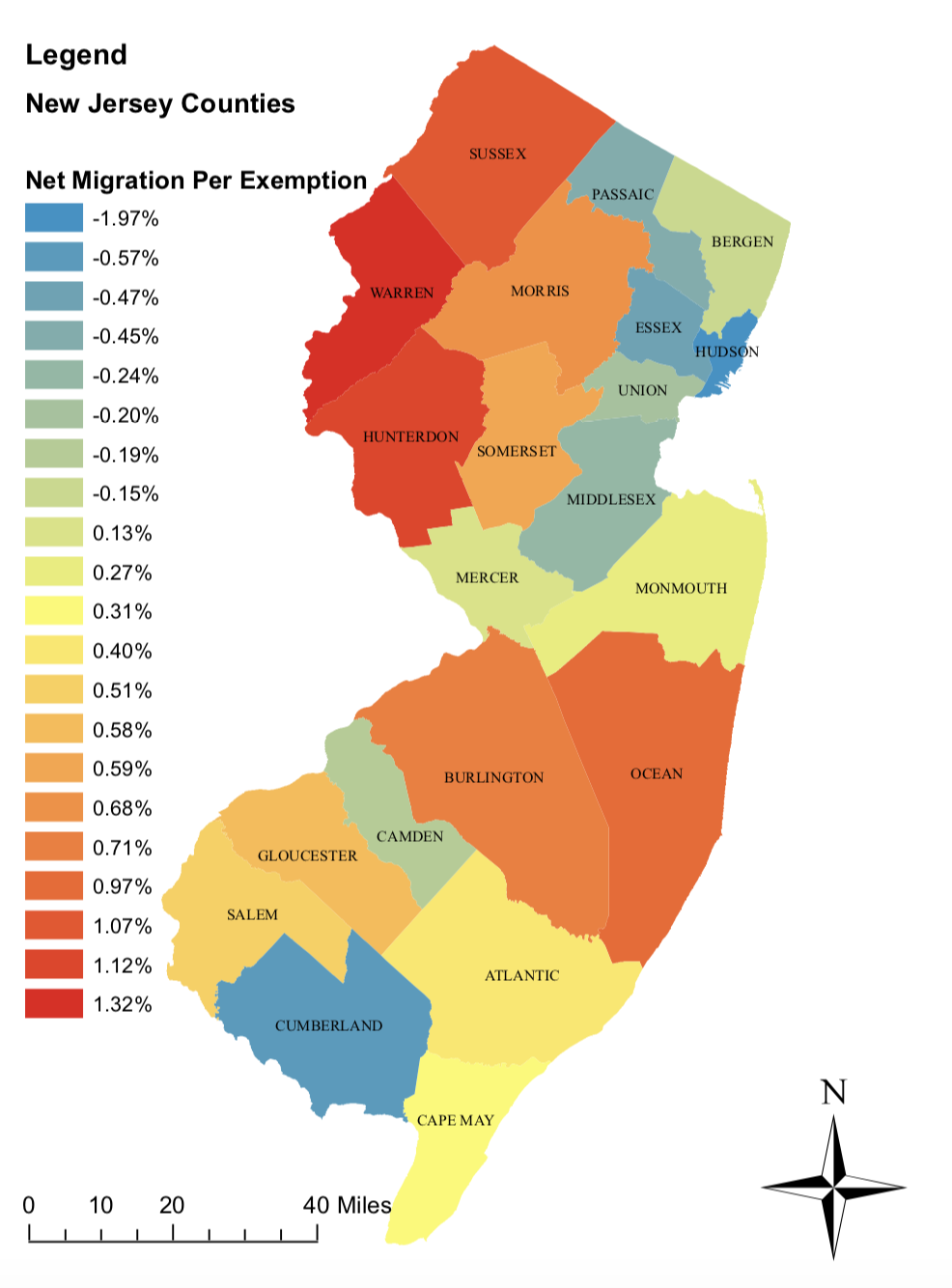by Tia Azzi and Michael Lahr, R/Econ for New Jersey Policy Lab
The latest report from R/ECON examines the migration trends across counties within New Jersey between 2018 and 2019. This report uses Internal Revenue Service (IRS) data, rather than that from the U.S. Census, to report migration by county.
This analysis divides New Jersey into five regions to assess the trends of intercounty migration. In- and out-migration of counties within the regions tends to be driven largely by intercounty movements within the regions. First, the Highlands counties of Sussex, Warren, and Hunterdon experienced positive net migration rates, largely from neighboring northern NJ counties – Morris, Somerset, and Passaic counties. Second, the three shore counties of Atlantic, Ocean, and Cape May also experienced positive net migration rates. Ocean was a recipient of significant inflows from Monmouth County. The continued upswing in the state’s economy and the rising propensity to telecommute undoubtedly supported the positive rates for these first two regions. Third, in South Jersey, Camden and Cumberland counties experienced negative net in-state in-migration. Camden is the region’s urban core, and its negative rate aligns with the experience of core urban counties of North Jersey–Essex, Hudson, and Union. Fourth, Central Jersey presented a mixed set of in-migration rates from 2018 to 2019, albeit all centered near-zero net migration. Finally, in North Jersey, the region largest in terms of population of the five New Jersey regions (about 44% of the state’s population), only Morris County experienced a positive net in-state in-migration rate. Of the six counties of North Jersey, only Morris lacks a substantial urban core and is also furthest from Manhattan.
This report concludes that while there is some discussion by politicians, developers, real estate professionals, and transit advocates[i] about New Jerseyans’ preferences to move to transportation hubs, IRS data suggest that suburbanization within the state continued to be a mainstay of development. Additionally, intercounty migration tends to occur most frequently between neighboring counties, as households generally opt not to move too far from their original homes.
For further analysis on intrastate migration rates within specific counties, read R/Econ’s full report.
Figure 1: County Net Migration Rates in New Jersey, 2018-2019

